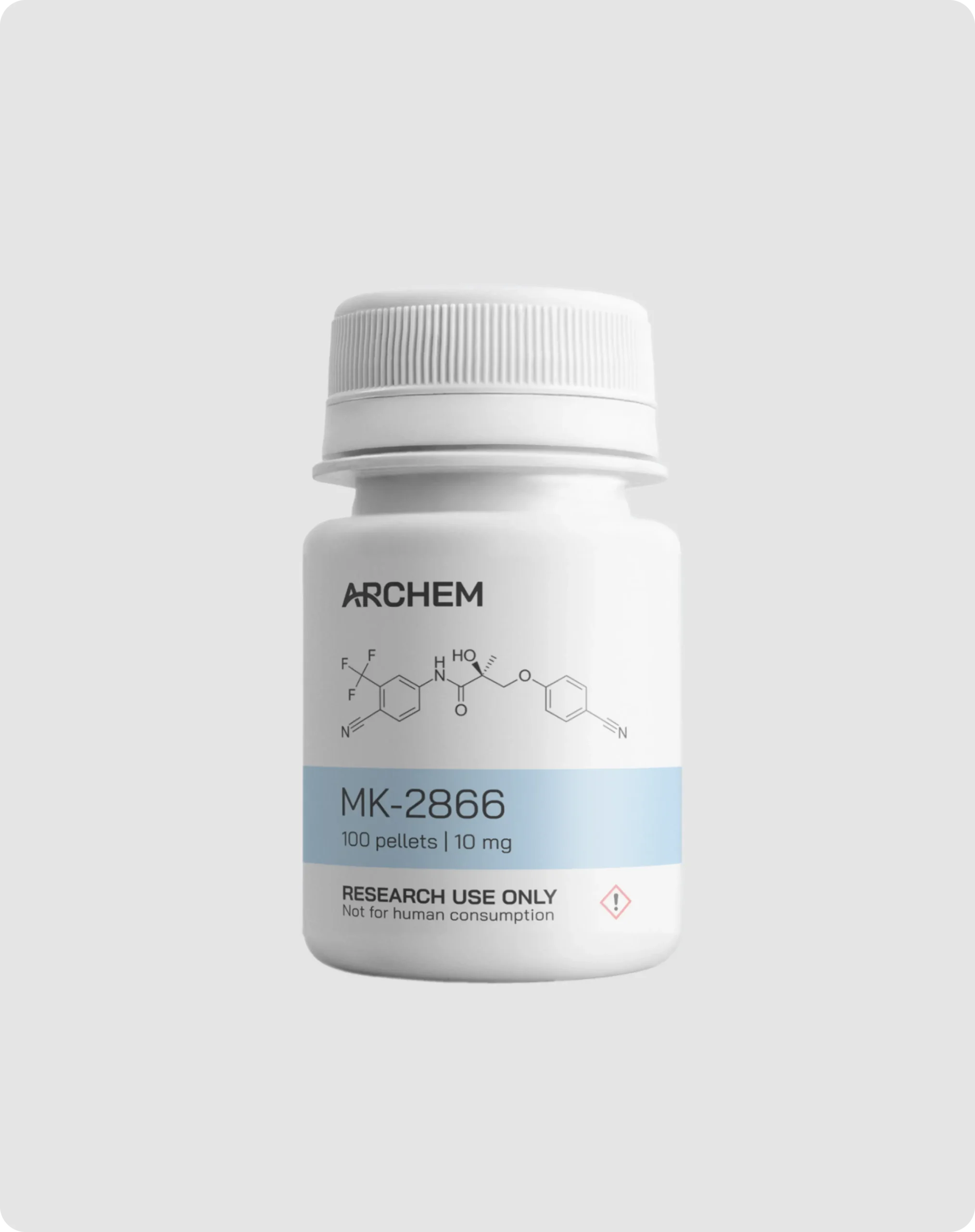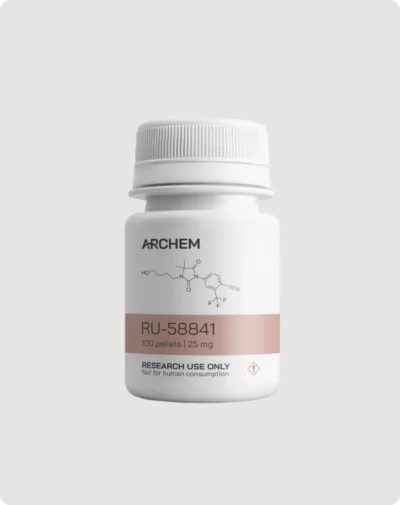Description
Ostarine UK Pellets (MK-2866)
Ostarine Pellets, chemically known as MK-2866, are a high-purity selective androgen receptor modulator (SARMs UK) designed for research purposes. These pellets demonstrate exceptional binding affinity to androgen receptors in skeletal muscle and bone, making them a valuable tool for studies on muscle wasting, osteoporosis, and related conditions.
Learn more about Ostarine: Reviewing the Research on Ostarine
Further SARMS learning: Can SARMs cause gynecomastia?
Material Safety Data Sheet: Download
Product Features and Specifications:
- Chemical Formula: C19H14F3N3O3
- Molecular Weight: 389.33 g/mol
- Physical Form: Stable, white to off-white pellets for controlled release.
- Purity: ≥99% by HPLC.
- Solubility: Soluble in DMSO, ethanol, and other polar organic solvents.
- Storage Conditions: Store at -20°C, in a dry, light-protected environment to maintain stability.
Applications: Ostarine Pellets are optimized for in vitro and in vivo research in:
- Muscle Atrophy and Sarcopenia: Examining anabolic activity and potential therapeutic pathways.
- Bone Density Research: Investigating mechanisms of bone preservation and regeneration.
- Metabolic Studies: Assessing effects on body composition, including fat and lean mass.
Handling and Safety:
- Recommended Use: For research use only. Not for human or veterinary applications.
- Precautions: Handle under appropriate laboratory safety conditions. Use personal protective equipment (PPE) as required.
- MSDS: Available upon request for detailed safety and handling procedures.
Regulatory Compliance: This product is intended solely for laboratory research and complies with all applicable research-use guidelines. Users are responsible for ensuring compliance with local and international regulatory requirements.
Packaging Options:
- Available in 5 mg, 10 mg, and 50 mg pellet configurations.
- Custom packaging and bulk quantities are available upon request.
Technical Support: Maxmusclelabs offers comprehensive technical assistance for the application and handling of Ostarine Pellets. Contact our team of experts for protocol optimization, analytical support, and troubleshooting.
Further Reading
- Phase II Clinical Trial on Muscle Wasting in Cancer Patients (2006): This double-blind, randomized, placebo-controlled trial involved 120 subjects (60 elderly men and 60 postmenopausal women). Participants receiving 3 mg of ostarine daily experienced an average increase in lean body mass of 1.4 kg compared to placebo. Additionally, improvements in muscle function were observed, with a favorable safety profile reported.
- Phase II Clinical Trial on Stress Urinary Incontinence in Women (2016): GTx initiated a study to evaluate ostarine’s potential as a treatment for stress urinary incontinence in women. However, the results did not achieve statistical significance, and further development for this indication was halted.
- Phase II Study on Advanced Androgen Receptor-Positive Breast Cancer (2016): This trial investigated ostarine’s efficacy in patients with advanced androgen receptor-positive, estrogen receptor-positive breast cancer. The study met its pre-specified primary efficacy endpoint, showing potential benefits in this patient population.
- Phase IIb Clinical Trial on Muscle Loss Associated with Weight Loss Drugs (2024): Veru Inc. announced the initiation of a double-blind, randomized, placebo-controlled Phase IIb trial to investigate ostarine (3 mg and 6 mg) as a treatment to prevent muscle loss in patients taking GLP-1 receptor agonists who are at risk for muscle atrophy or weakness. The study’s primary endpoint is measuring lean body mass at 16 weeks, with topline results expected by the end of 2024.
CAS : CAS 841205-47-8





